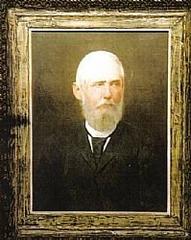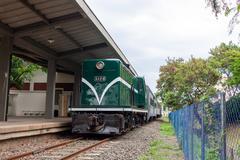Antigo Colégio São Luís Itu: Visiting Hours, Tickets, and Historical Guide
Date: 14/06/2025
Introduction
The Antigo Colégio São Luís, located in the historic heart of Itu, São Paulo, is a landmark of Brazil’s Jesuit educational legacy and a cradle of early Brazilian football. Founded in the 19th century, this site has profoundly influenced the city’s cultural, academic, and social landscape. Today, while its original function as a college has evolved, the site continues to attract visitors keen to explore its history, architecture, and unique role in shaping Brazilian identity. This comprehensive guide covers practical details—visiting hours, tickets, accessibility, and nearby attractions—while delving into the fascinating story behind this emblematic institution (Portal da Cidade Itu; Livro de Ouro Colégio São Luís; turismo.itu.sp.gov.br).
Historical Overview
Jesuit Foundations and Educational Influence
Established in 1867, the Antigo Colégio São Luís was a flagship of Jesuit pedagogy in Brazil. The Jesuits brought a rigorous curriculum centered on classical studies, philosophy, and sciences, aiming to foster intellectual prowess and moral integrity. Their holistic approach shaped generations of Brazilian leaders and contributed to Itu’s reputation as the “Roma Brasileira” due to its academic excellence (Portal da Cidade Itu).
Football’s Early Days in Brazil
Under the rectorship of Padre José Mantero (1877–1893), the Colégio São Luís became one of the first places in Brazil where football was played—before the sport’s popularization by Charles Miller. The school’s open fields and student enthusiasm helped give rise to what would become a national passion and a defining element of Brazilian culture (Portal da Cidade Itu).
Padre Luiz Yábar (1893–1898) further formalized football at the school, introducing structured rules and organized matches. Alumni spread the sport to other regions, cementing the school’s role in Brazilian football history.
Architectural and Urban Heritage
The site’s neoclassical architecture, grand façades, and spacious courtyards reflect both Portuguese colonial and early republican design. These elements, combined with its central location, helped shape Itu’s urban development and cultural identity (Livro de Ouro Colégio São Luís).
The Modern Site: Military and Cultural Functions
Today, the original campus of the Colégio São Luís in Itu serves as the base of the 2º Grupo de Artilharia de Campanha Leve – Regimento Deodoro. While the educational institution moved to São Paulo in 1918, the Itu site preserves its historic façade, courtyards, and chapel. The site’s dual identity—as both a military installation and a cultural landmark—offers a unique visitor experience blending history, education, and military heritage (turismo.itu.sp.gov.br; jornalperiscopio.com.br).
Visiting Hours and Tickets
Access to the site is by appointment only due to its military function. Public visiting hours are not available. To arrange a visit, contact the 2º GAC Regimento Deodoro directly or coordinate through the Itu tourism office (turismo.itu.sp.gov.br).
- Tickets and Fees: Some tours may require a ticket or nominal fee (confirm with the tourism office or military unit).
- Group Visits: Individual visitors may join scheduled group tours when available.
- Required Documentation: Valid photo ID is necessary for entry.
What to See: Site Layout and Museum
- Preserved 19th-Century Facade: The neoclassical main entrance remains a highlight for architectural enthusiasts.
- Historic Chapel: Occasionally open during tours, used for commemorative events.
- Museum Exhibits: Collections include historic trophies, early 20th-century uniforms, WWII artifacts, and documents illustrating the transition from college to regiment.
- Interpretive Panels: These explain the site’s Jesuit educational roots and military heritage (primarily in Portuguese).
Note: Public access is limited to certain areas; most of the site remains an active military facility.
Guided Tours and Special Events
Guided tours offer insight into the history, architecture, and legacy of the Antigo Colégio São Luís. Tours are typically led by military personnel or local historians and may be enhanced during special events such as the founding anniversary (May 12) or cultural festivals.
Educational Initiatives: The site supports heritage education projects like the Projeto Oficina Escola de Artes e Ofícios de Itu (POEAO), training local youth in conservation techniques (jornalperiscopio.com.br).
Accessibility
- Partial accessibility: Wheelchair users and visitors with limited mobility may face challenges in some areas due to historic stairs and uneven surfaces. Contact the site in advance to discuss accommodations.
- Restrooms: Available on-site. There is no café or gift shop; bring water and snacks.
Getting There
- Location: Praça Duque de Caxias, central Itu, near other historical landmarks.
- By Car: Ample public parking nearby.
- By Public Transport: Itu’s intercity bus terminal offers access from São Paulo; local taxis or ride-share services connect to the site.
Nearby Historical Attractions
Enhance your visit by exploring additional sites within walking distance:
- Praça Dom Pedro I: Features colonial-era monuments and a historic cross.
- Museu Republicano “Convenção de Itu”: Explores Itu’s role in the republican movement (Museu Republicano).
- Igreja Matriz Nossa Senhora da Candelária: Showcases sacred art from the former convent.
- Praça dos Exageros: Known for its whimsical oversized sculptures (turismo.itu.sp.gov.br).
Practical Visitor Tips
- Book in advance: Required for entry.
- Dress appropriately: Comfortable shoes and modest attire recommended.
- Photography: Allowed in most outdoor and museum areas; restrictions apply elsewhere—ask your guide.
- Language: Tours and signage are mainly in Portuguese. Consider arranging a translator if needed.
Frequently Asked Questions (FAQ)
Q: What are the visiting hours of Antigo Colégio São Luís?
A: Visits are by appointment only; no fixed public hours.
Q: Are tickets required?
A: Some tours may require tickets or fees—confirm when booking.
Q: Is the site accessible to wheelchairs?
A: Partial accessibility—contact in advance for specific needs.
Q: Can I visit individually?
A: Individual visits are possible but often need to join a scheduled group.
Q: Is photography allowed?
A: Generally yes in outdoor and museum areas; restrictions apply elsewhere.
Summary and Recommendations
Antigo Colégio São Luís is more than a historical monument—it is a living narrative of Jesuit education, the birth of Brazilian football, and Itu’s evolution. While public access is limited due to its current military function, advance booking allows visitors to immerse themselves in a unique blend of history, architecture, and cultural memory. Combine your visit with Itu’s nearby museums, churches, and plazas for a truly enriching experience. For current information on tours, events, and access, consult official tourism channels and consider using the Audiala app for real-time updates.
Sources
- Portal da Cidade Itu
- Livro de Ouro Colégio São Luís
- turismo.itu.sp.gov.br
- jornalperiscopio.com.br
- Museu Republicano
For more travel tips, itineraries, and historical insights, download the Audiala app and follow our latest posts.


